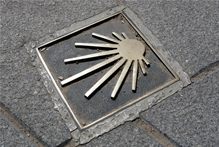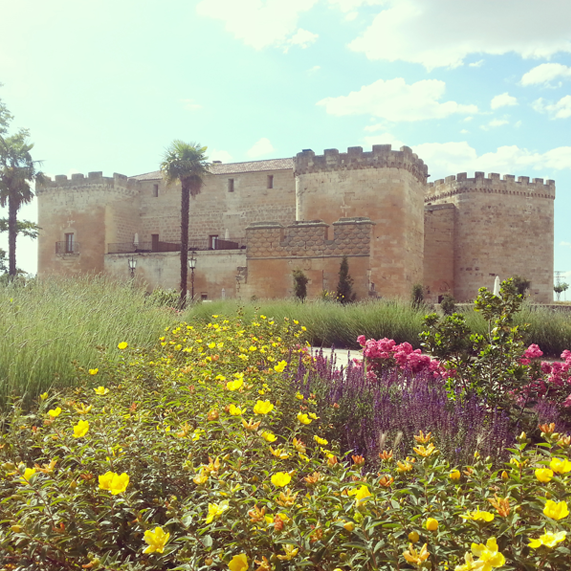At this point, travellers are just about to leave the Salamanca leg of the Jacobean Route. A much shorter distance remains before reaching Astorga, and once there, the French Route towards Santiago de Compostela. Leaving the village of Calzada de Valdunciel along the Arroyo de la Vega stream which, it is assumed, in former time was crossed using a ford built using the stony remains found in the village.

The work on the Autovía de la Plata throughout this region led to the building of route which, while not being the original, possibly avoids any run ins with the modern transport routes. Once again, from the summit, we make our way down towards water. This time, the banks of the Cañedo. Just prior to crossing this very changeable river, visitors find themselves face to face with Huelmos de Cañedo farmstead, with a very peculiar looking abandoned train station due to a lack of a railroad along the pedestrian Vía de la Plata.
Once again travellers finds themselves making their way along the Cañada Real de la Plata heading towards Izcala, virtually the last Salamanca enclave before exiting the province and heading into neighbouring Zamora via the village of El Cubo del Tierra del Vino, the real end to this stage of the way. Along this almost endless straight stretch, there is the occasional tower to break the hypothetical tediousness and most definitely the fatigue. Facing you, the modern Topas prison, which can be seen from miles around. To the right of the way, travellers will be able to make out the breathtaking silhouette of the El Buen Amor Castle, now converted into a magnificent hotel facility, but which in about the 13th century, was built as a military fortress.

After these two very contrasting buildings, the way crosses a bridge over the Izcala river. Different versions have been published, but the one most generally accepted tells us that the fifth mansio found in the province of Salamanca, the so-called “Sibarim”, was build somewhere nearby.
From there, we return to the high ground. It all started in the highlands, and there too shall it end. This marks the end of the province and the end of this fantastic walk along a wonderful route that finishes at the final resting place of the Apostle Santiago. A route that crosses Salamanca north/south and which leaves travellers feeling satisfied at having been able to discover the wonderful spots along this historic route, a route that still has a long future ahead
Fuentes: “La Vía de la Plata en la provincia de Salamanca”. Patronato Provincial de Turismo de Salamanca. Salamanca, 2010.
“Los miliarios de la Vía de la Plata en Salamanca”. Junta de Castilla y León.
“Vía de la Plata”. caminodesantiago.consumer.es